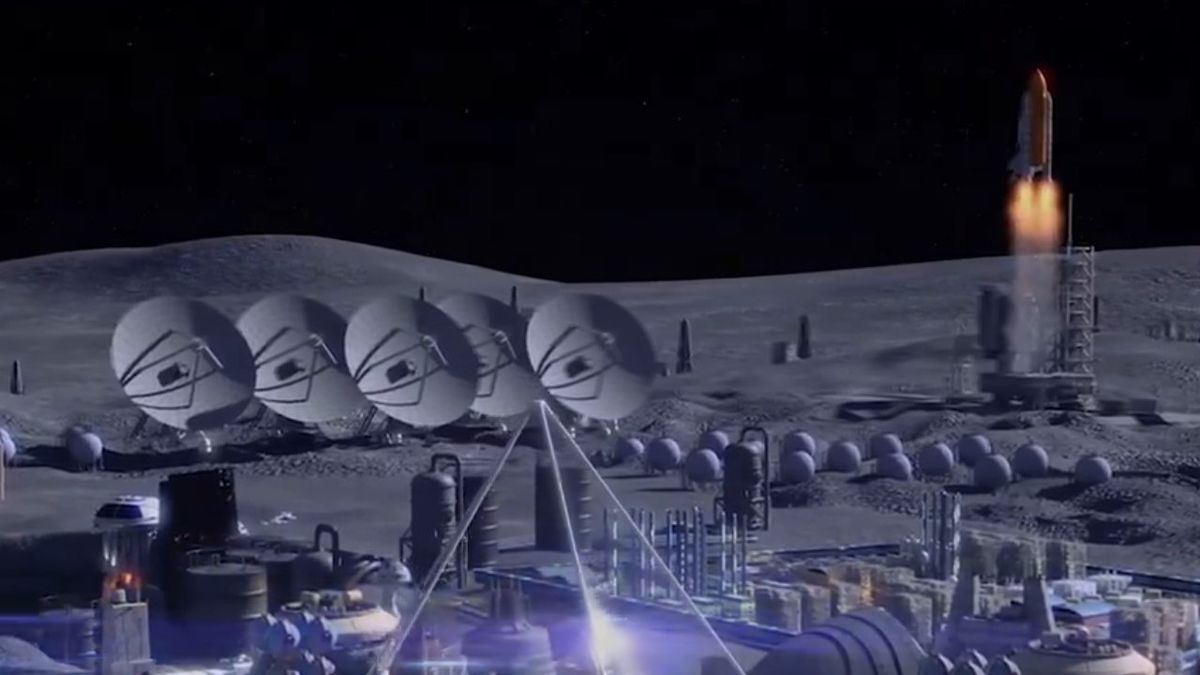Europe initiates an ambitious ‘Moonlight’ initiative to aid lunar exploration.

MILAN — The European Space Agency (ESA) is building infrastructure to support lunar exploration.
ESA officially launched the Moonlight Lunar Communications and Navigation Services (LCNS) program here at the International Astronautical Congress on Tuesday (Oct. 15), with the aim of providing services for the more than 400 moon missions planned by space agencies and private companies over the next two decades.
Moonlight will be a constellation of five lunar satellites, which together will enable precise, autonomous landings and surface mobility, according to ESA, while facilitating high-speed communication and data transfer across the roughly 250,000 miles (400,000 kilometers) between Earth and the moon.
“ESA is taking the crucial step in supporting the future commercial lunar market, as well as ongoing and future lunar missions,” Josef Aschbacher, ESA director general, said at the Moonlight signing ceremony in Milan.
Related: The moon: Everything you need to know about Earth’s companion
The first step will be launching Lunar Pathfinder, a precursor communications relay satellite manufactured by Surrey Satellite Technology Ltd (SSTL), in 2026. Moonlight’s initial services are scheduled to begin by the end of 2028, and the system is to be fully operational by 2030.
Moonlight will prioritize coverage at the south pole of the moon, which is the focus of many missions due to its unique and beneficial lighting conditions and the prospect of water ice stored in permanently shadowed craters.
The NASA-led Artemis program aims to get astronauts back onto the moon in coming years, and build a sustainable presence there. ESA is engaged in the program and contributing to Artemis’ Gateway project. Europe also plans to land its Argonaut spacecraft on the moon around 2031, while numerous private missions are planned for the moon.
“This is a very special moment for Europe,” said Javier Benedicto, ESA’s director of navigation. “The Moonlight [agreement] we are signing today is the backbone of the future navigation system around and on the surface of the moon.”
The program involves a number of directorates at ESA and engages numerous countries, industrial and institutional partners.
“Leading a prestigious pan-European team, Telespazio is committed to creating the conditions for a stable and secure presence on the moon while simultaneously opening up extraordinary commercial opportunities for Europe in cislunar space,” said Gabriele Pieralli, CEO of Telespazio, said in a statement.
One big benefit of Moonlight in its quest to make it a key lunar service is that its communications capabilities will reduce the need for individual communication systems, allowing customers to focus more on the astronauts and robotics involved in their missions.
“We are starting something huge,” said Pieralli. “I am convinced we do not even realize the importance of what is happening today, but the future is in front of us.”
The necessary work on international collaboration and coordination is also underway. As part of the program, ESA is also collaborating with NASA and Japanese space agency JAXA on LunaNet, a framework for lunar communication and navigation standards. This, crucially, aims to ensure compatibility with future lunar infrastructures and technologies. The first and pioneering lunar navigation interoperability tests are planned for 2029.
The vision and ambition for supporting exploration doesn’t stop there. Beyond Moonlight, ESA will look to leverage the technologies and experiences gained from the program to build the Mars Communication and Navigation Infrastructure (MARCONI) in the future.
The post Europe launches ambitious ‘Moonlight’ program to support lunar exploration appeared first on SNN.




